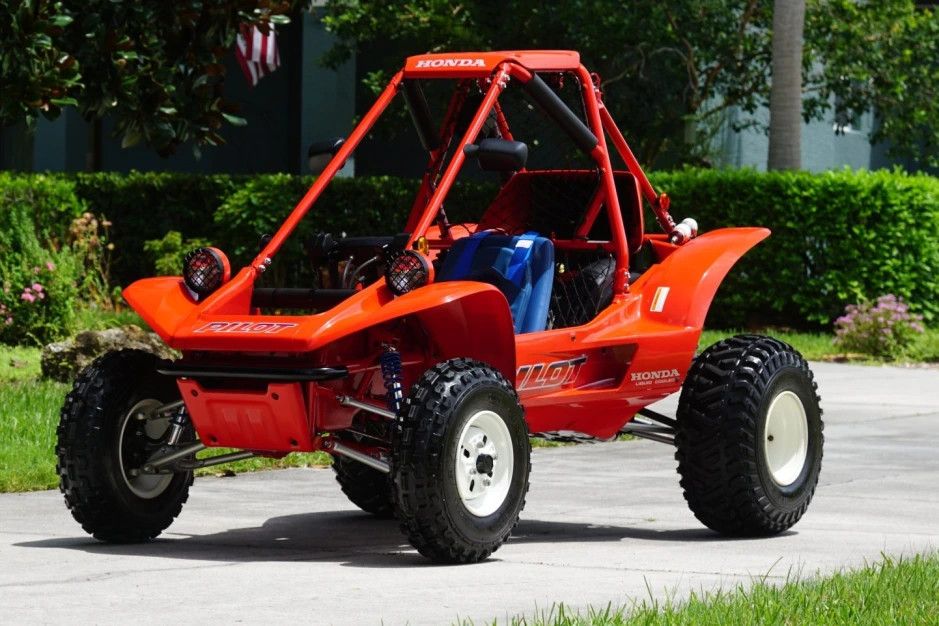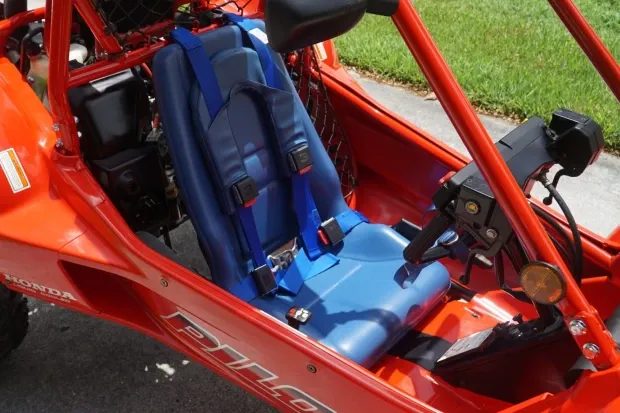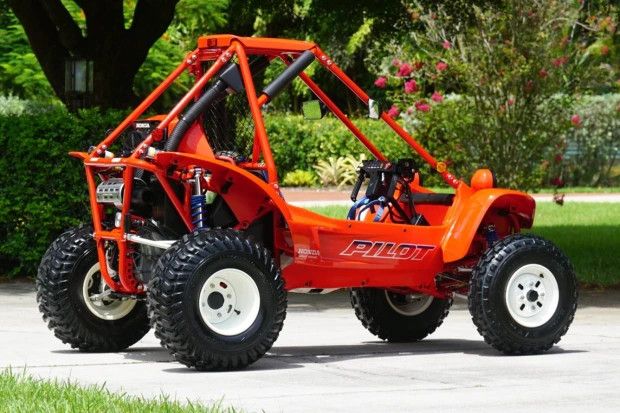More than a decade before introducing the mid-size Honda Pilot C-SUV made in/and for the North American market since 2002, there was the original Honda Pilot all-terrain vehicle (ATV) manufactured in just two years between 1989 and 1990. The modern Pilot is Honda’s largest SUV, just like the original Pilot was the only production ATV by a big-brand automaker. Some called it a UTV, which we shall forgive in consideration of the automotive scene in that period.
However, the original Honda Pilot is more an ATV than a utility task vehicle (UTV). Yes, we realize that’s a tricky distinction because a UTV is useful for work or fun, which fits the original Honda Pilot’s description. Whereas an ATV is purely for recreation - they're also 4-wheelers, which also fits the original Pilot's description.
Then again, a UTV should have a cabin for two to four riders; an ATV is mono, traditionally speaking. All things considered, the original Honda Pilot is definitely an ATV, and Honda released it when the segment was still young. The best part is that the Japanese automaker rocked it with a slew of impressive features that greatly influenced its high collectible value today.
How The Honda Pilot Compares To Modern ATVs
When you observe the Honda Pilot through the lens of modern ATVs, what you’d see is a glorified go-kart with a major manufacturer’s badge or even a high-end power wheel. But as the adventurous and fun lovers who owned the vehicle will tell you, the Honda Pilot FL400R was much more than that.
It should come as a surprise to the majority of outdoorsy Americans to learn that the now discontinued Polaris Ace is a latecomer to the single-seat ATV genre compared to the original Honda Pilot that hit the market in 1989, itself only a descendant of a much older Honda – the 1977 single-seat Honda Odyssey ATV. In other words, while the American brand geared up to launch the Polaris Ace 900 in 2014, the Odyssey and Pilot had been there and done that.
Honda first introduced the Odyssey as a 2WD powered by a pull-start, air-cooled, 250cc 2-stroke engine paired with the single-range, belt-type automatic transmission with no reverse. The Odyssey was primitive and basic but offered plenty of fun. It didn’t have rear suspension (a taboo for today’s ATV/UTVs), and that caused problems with stress cracks in the frame and handling in rough terrain. The front suspension was a trailing arm with 4 inches of travel.
But by 1985, the Odyssey, though still a 2WD, had evolved significantly like the modern-day ATV. Ditching the pull-start, it featured electric starting and fully automatic transmission, complete with a reverse. It also featured an independent front and rear suspension. Hi-tech and well-equipped, the Pilot was actually the most advanced version of the Odyssey.
Thirty-three years later, the original Honda Pilot is very much at home with modern-day single-seat ATVs. The Pilot even weighed less than the Polaris Ace – 592.5 lbs vs. Ace’s 830 lbs. Safety and performance were the watchwords. It got powered by an electric-start 397cc liquid-cooled, single-cylinder engine paired with a belt-type, fully automatic CTV transmission with forward, neutral, and reverse.
Remember, this was in 1989, and the big difference between the powerplant and modern ATVs is the Pilot’s 2-stroke. It also had a backup pull starter, just in case.
The Evolution Of The Honda Pilot
Apparently, the Honda Pilot and even the Odyssey have come a long way before dying and reincarnating into the unibody mid-size C-SUV and the front-engined, 5-door minivan we know today. The original Pilot rode on a chassis that closely resembles what's obtainable in this generation's 4X4s. It possessed a great balance, thanks to its 59.5-inch-wide body, a dimension that closely matches this generation’s 60-inch-wide woods-width UTVs.
It featured a double-A-arm suspension that travel 5.9 inches up front and 7.1 inches in the rear with gas-charged rear shocks with remote reservoirs. Mind you, this was an impressive setup at the time. Furthermore, the Pilot rocked standard equipment similar to features you’d see on modern ATVs, such as a shoulder harness and rearview mirrors. It’s no wonder the Japanese automaker refused to classify the machine back then, saying instead that the Pilot “doesn’t fit into a class; it creates one.”
Honda got adventurous minds all excited by taking an innovative approach to a segment that’s already still young. For instance, the Pilot had a yoke for steering, which included controls for the throttle and brake, instead of a conventional steering wheel and pedals. The aircraft-like yoke featured wrist restraints to ensure the safety of the rider’s hands. Speaking of safety, the Pilot had front drum brakes, something you still won’t find on modern ATVs.
The price – $5,998 (the equivalent of $13,878) – is probably why Honda discontinued the original Pilot after just two years. Either that or the rising cases of injuries and fatalities attributed to ATVs back then. Besides a nominal cosmetic difference, the mechanical features remained unchanged in those two years. It was the only big-brand, "purely for fun" ATV since there weren't any "made-for-fun" 2-seat UTVs at the time.
This Original Honda Pilot Popped Up For Sale
The ATVs you see in these pictures are from the original 1989 Honda Pilot that recently popped up at a Bring a Trailer auction. It’s actually surprising to see this example in such pristine condition, considering what the machine is for.
The listing described it as “an enclosed single-seat ATV powered by a 397cc two-stroke single mated to a continuously variable automatic transmission and features a red-finished roll cage, frame, and bodywork.” In other words, the vehicle is in its original condition, complete with a single blue plastic seat with a four-point harness, an air snorkel, a rear disc brake, 10″ steel wheels, and both pull and electric starters. The listing has closed now, but you can bid on this pristine condition 1990 Honda Pilot FL400R.

68.jpg)


